MAP OF INDIA SHOWING RIVERS:-

Rivers in India carry almost 1683000 million cubic meters of water every year. Indian rivers can be divided into 4. They are :
- Central Indian and Rivers of the Deccan region
- Himalayan Rivers
- Coastal Rivers
- Inland rivers
Rivers of the Deccan region : The rivers of the Deccan region and central India are totally dependant on the monsoons and these rivers dry up in summer and almost all of them are non-perennial rivers. The major rivers of this region are the following :
1. Narmada : Length of the river is 785 km. Narmada river originates from the Amarkaandak branch of the Maikaal range. It flows through the Vindhya Satpura ranges and finally flows into the Arabian Sea.
2. Tapti : Length of the river is 720 km. The river originates from Bethool in Madhya Pradesh. The Tapti river empties into the Arabian Sea.
3. Mahanadi : The Mahanadi river is 880 km in length. The river originates from the Sahava region which lies south to the Amarkaandak peak. The river splits into distributaries in the costal plains of Cuttak in Orissa.
4. Damodar : The river is 530 km in length. Damodar originates from the Daaru peak in Chotta Nagpur and merges with the Hoogli river. Gaddi, Konaar, Jamunia, Baaraakaar etc are tributaries.
5. Godavari : Godavari is one of the longest rivers of the Deccan region. It flows over a distance of 1440 km. Godavari originates from Thrayyabaka near Nasik in the state if Maharashtra. It flows through Andhra Pradesh before emptying into the Bay of Bengal. Praneetha, Penuganga, Vardha, Indravathi etc are the major triburaries.
6. Krishna : Krishna is also another important river of the southern region. The river originate near Mahabaleshwar and flows east through the state of Andhra Pradesh and empties into the Bay of Bengal. Bheema and Thungabhadra are the major tributaries.
7. Kaveri : The river flows through the states of Karnataka and Tamilnadu and empties into the Bay of Bengal. Length of the river is 760 km.
Apart from these major rivers, rivers like Chambal, Sindh, Bekvason etc... originates in the Vindhya-Satpura ranges and merges with the Ganges and the Yamuna.
North Indian Rivers : Most of the north Indian rivers originate from the Himalayas and are very prosperous and perennial since they are ice fed. Floods are common in some of these rivers during summer when the ice in the Himalayas melts during summer increasing the amount of water in these rivers.
Sindhu : The Sindhu river originates in the Tibetan Plateau and empties into the Arabian Sea. The river flows over a length of 2880 km. Following the India-Pakistan division, majority of the river now flows through Pakistan. Sutlej, Jhalem, Chenab, Ravi, Biyaas etc are the major tributaries.
Sutluej : The river originates in the Kailaas regions, flows 200 km westwards through Ludhiana and Jalandhar districts of Punjab and then changes route and flows south-west. The total length of the river is 1440 km of which it flows 1100 km within India.
Ganga or the Ganges : Ganges is the longest river in India and has a total length of 2480 kms. The Ganges flows through the states of Uttar Pradesh, Bihar and Bengal. River Ganges originates from Gomukh in the Himalayas. The river flows 1200 km eastwards and then turns south and splits into two. One branch enters Bangladesh and the other branch, known by the names Hoogli and Bhageeradhi, flows south and empties into the Bay of Bengal. The main tributaries of the Ganges river are Yamuna, Zon, Kozi etc...
Yamuna : The river is 1375 km in length and runs parallel to the ganges for almost 600 km before joining it at Allahabad in Uttar Pradesh. Chambal, Sindh, Bethwa etc... are the main tributaries.
Brahmaputra : The river Brahmaputra originates from Kailaas, near the Maanasasarovar lake. After flowing through southern Tibet for almost 1250 km, Brahmaputra enters India and then Bangladesh, joins with the branch of Ganges in Bangladesh and finally empties into the Bay of Bengal. Brahmaputhra is the most prosperous river among all the other Indian rivers.




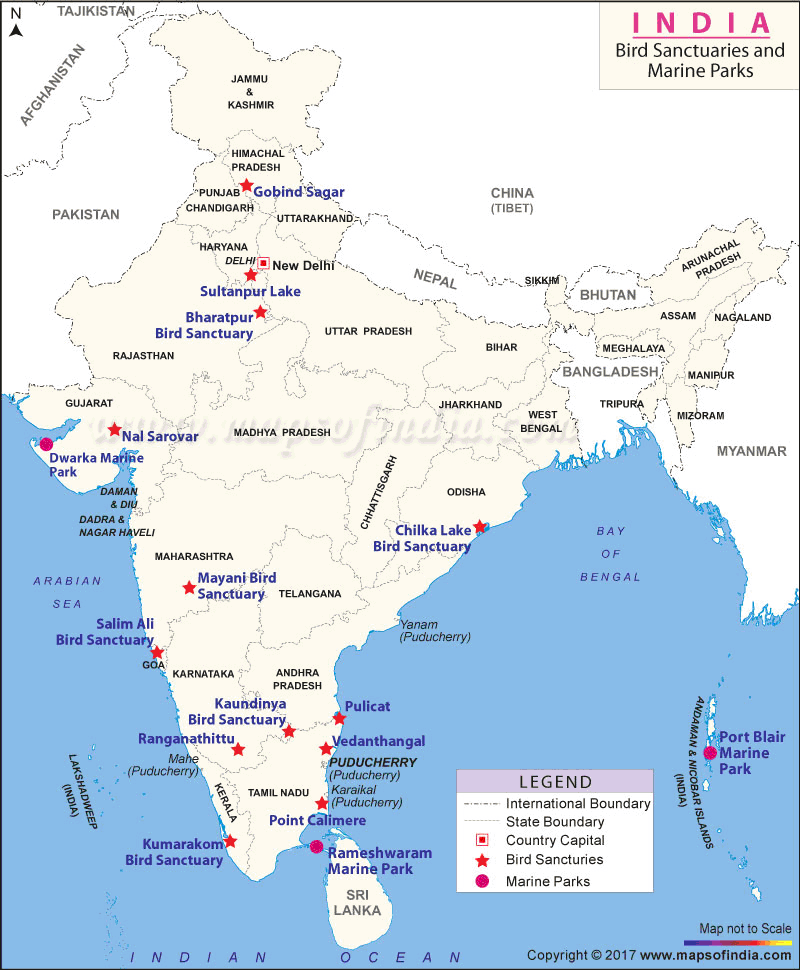
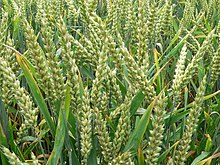
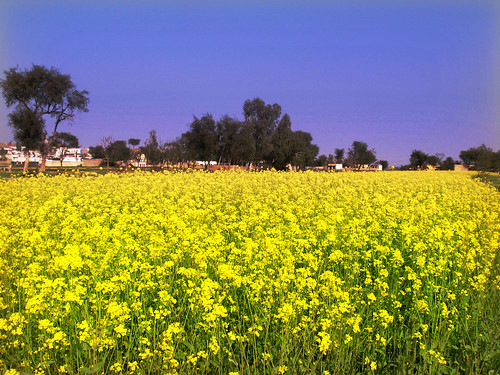
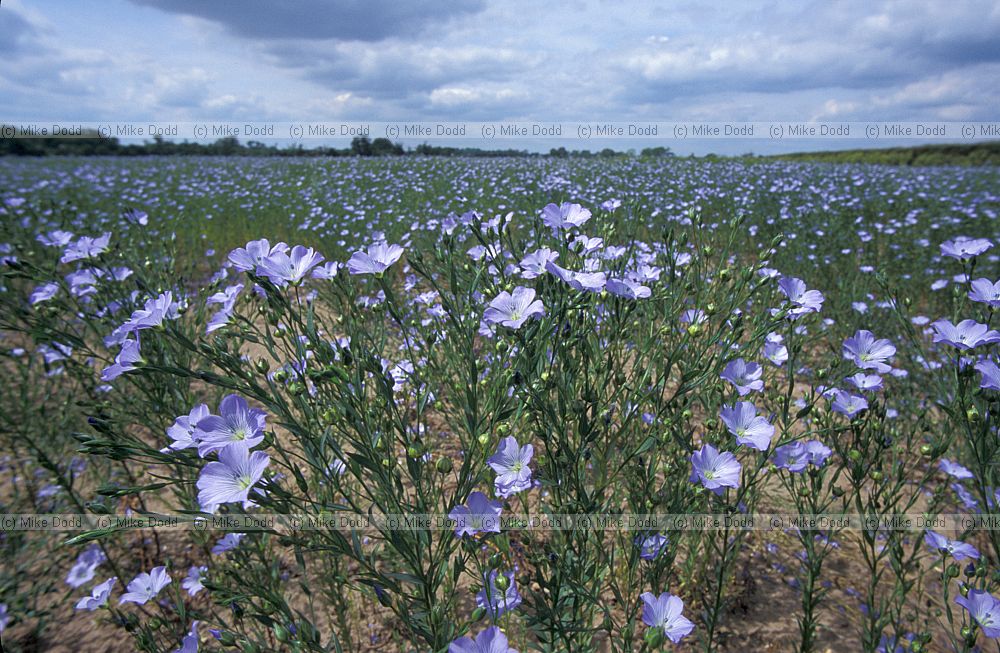
 Barley
Barley 


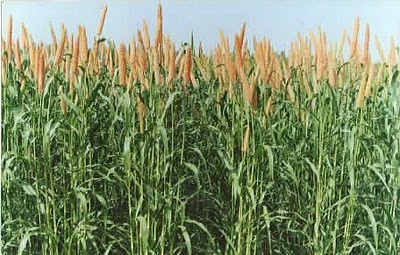





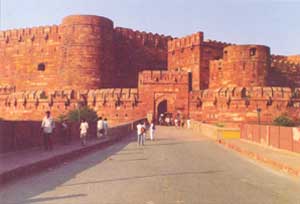 Agra Fort represents the first major building project of Akbar, with remains of only a few buildings built by him which now survive. Built on the site of an earlier castle in AD 1565-1575, the fort, apart from other important units, contains Jahangiri Mahal, Khass Mahal, Diwan-i-Khass, Diwan-i-Am, Machchhi Bhawan and Moti Masjid. Many extant buildings were erected by Shah Jahan (AD 1630-1655). Of its four gates, the most impressive is the Delhi Gate on the west.
Agra Fort represents the first major building project of Akbar, with remains of only a few buildings built by him which now survive. Built on the site of an earlier castle in AD 1565-1575, the fort, apart from other important units, contains Jahangiri Mahal, Khass Mahal, Diwan-i-Khass, Diwan-i-Am, Machchhi Bhawan and Moti Masjid. Many extant buildings were erected by Shah Jahan (AD 1630-1655). Of its four gates, the most impressive is the Delhi Gate on the west.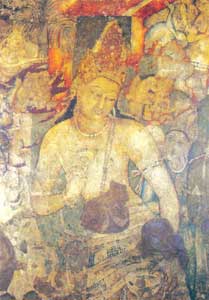 The world famous Ajanta Caves including the unfinished ones are thirty in number, of which five (9, 10, 19, 26 and 29) are chaitya-grihas and the rest are viharas (monasteries).
The world famous Ajanta Caves including the unfinished ones are thirty in number, of which five (9, 10, 19, 26 and 29) are chaitya-grihas and the rest are viharas (monasteries).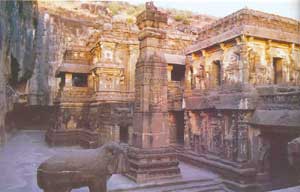 The magnificent group of rock-cut shrines of Ellora, representing three different faiths, Buddhist, Brahmanical and Jaina were excavated during the period from fifth to the thirteenth century AD.
The magnificent group of rock-cut shrines of Ellora, representing three different faiths, Buddhist, Brahmanical and Jaina were excavated during the period from fifth to the thirteenth century AD. 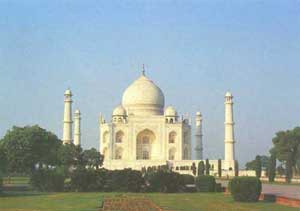 Taj on the right bank of River Yamuna, about 1.5km from the Agra fort, was built to enshrine the remains of Arjumand Banu Begam entitled Mumtaj Mahal, the queen of the Mughal emperor Shah Jahan. lts construction commenced in AD 1631 and completed seventeen years later at an enormous cost and labour. d.
Taj on the right bank of River Yamuna, about 1.5km from the Agra fort, was built to enshrine the remains of Arjumand Banu Begam entitled Mumtaj Mahal, the queen of the Mughal emperor Shah Jahan. lts construction commenced in AD 1631 and completed seventeen years later at an enormous cost and labour. d.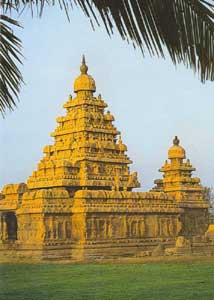 Mahabalipuram or Mamallapuram, the city of Mamalla, is named after the title of great Pallava ruler Narasimhavarman-I (AD 630-668). It was a sea-port during the time of Periplus (first century AD) and Ptolemy (AD 140) and many Indian colonists sailed to South-East Asia through this port town.
Mahabalipuram or Mamallapuram, the city of Mamalla, is named after the title of great Pallava ruler Narasimhavarman-I (AD 630-668). It was a sea-port during the time of Periplus (first century AD) and Ptolemy (AD 140) and many Indian colonists sailed to South-East Asia through this port town. 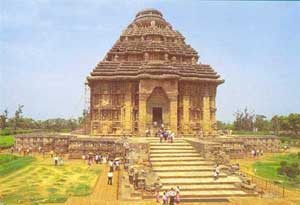 Konark is the Kainapara of the Periplus (first century AD) - an important port of the Orissan coast. The most notable marvel is the stately Sun Temple, built in c. AD 1250, during the reign of the Eastern Ganga King Narasimhadeva-I (AD 1238-1264), to enshrine an image of Sun (Arka), the patron deity of the place.
Konark is the Kainapara of the Periplus (first century AD) - an important port of the Orissan coast. The most notable marvel is the stately Sun Temple, built in c. AD 1250, during the reign of the Eastern Ganga King Narasimhadeva-I (AD 1238-1264), to enshrine an image of Sun (Arka), the patron deity of the place. 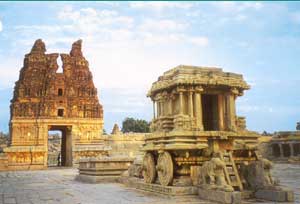 Hampi, on the southern bank of the Tungabhadra, once formed the seat of the mighty Vijayanagara empire. The contemporary chroniclers who came from far off countries like Arabia, Italy, Portugal and Russia visited the empire and have left graphic and glowing accounts of the city.
Hampi, on the southern bank of the Tungabhadra, once formed the seat of the mighty Vijayanagara empire. The contemporary chroniclers who came from far off countries like Arabia, Italy, Portugal and Russia visited the empire and have left graphic and glowing accounts of the city.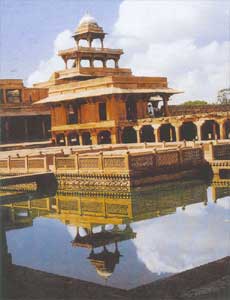 In honour of saint Shaikh Salim Chishti, the Mughal emperor Akbar, the great, founded a magnificent city on Sikri ridge. In 1571 he ordered the construction of buildings for his own use and asked the noblemen to built houses for themselves. Within a year, most of the work was finished and within the next few years, a well planned city with administrative, residential and religious buildings came into existence.
In honour of saint Shaikh Salim Chishti, the Mughal emperor Akbar, the great, founded a magnificent city on Sikri ridge. In 1571 he ordered the construction of buildings for his own use and asked the noblemen to built houses for themselves. Within a year, most of the work was finished and within the next few years, a well planned city with administrative, residential and religious buildings came into existence.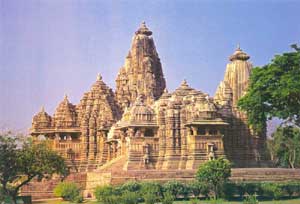 Khajuraho, the ancient Kharjjuravahaka, was the principal seat of authority of the Chandella rulers who adorned it with numerous tanks, scores of lofty temples of sculptural grace and architectural splendour. The local tradition lists eighty-five temples but now only twenty-five are standing examples in various stages of preservation. But for Chausath-Yogini, Brahma and Mahadeva which are of granite, all the other temples are of fine grained sandstone, buff, pink or pale yellow in colour. The Lakshmana temple dedicated to Vishnu built byYasovarman (AD 954), is an ornate and evolved example.
Khajuraho, the ancient Kharjjuravahaka, was the principal seat of authority of the Chandella rulers who adorned it with numerous tanks, scores of lofty temples of sculptural grace and architectural splendour. The local tradition lists eighty-five temples but now only twenty-five are standing examples in various stages of preservation. But for Chausath-Yogini, Brahma and Mahadeva which are of granite, all the other temples are of fine grained sandstone, buff, pink or pale yellow in colour. The Lakshmana temple dedicated to Vishnu built byYasovarman (AD 954), is an ornate and evolved example.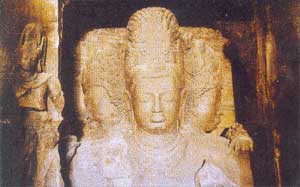 Elephanta anciently known as Gharapuri, the island capital of Konkan Mauryas, is celebrated for its colossal image of Mahesamurti with three heads each representing a different form.
Elephanta anciently known as Gharapuri, the island capital of Konkan Mauryas, is celebrated for its colossal image of Mahesamurti with three heads each representing a different form.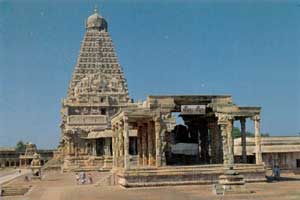 The celebrated Saiva temple, appropriately called Brihadisvara and Dakshinameru, is the grandest creation of the Chola emperor Rajaraja (AD 985-1012) at Thanjavur. It was inaugurated by the king himself in his 19th regnal year and named it after himself as Rajesvara Peruvudaiyar. Architecturally, it is the most ambitious structural temple built of granite. The temple is within a spacious inner prakara of 240.90 m long (east-west) and 122m broad (north-south), with a gopura at the east and three other ordinary toranaentrances one at each lateral sides and the third at rear.
The celebrated Saiva temple, appropriately called Brihadisvara and Dakshinameru, is the grandest creation of the Chola emperor Rajaraja (AD 985-1012) at Thanjavur. It was inaugurated by the king himself in his 19th regnal year and named it after himself as Rajesvara Peruvudaiyar. Architecturally, it is the most ambitious structural temple built of granite. The temple is within a spacious inner prakara of 240.90 m long (east-west) and 122m broad (north-south), with a gopura at the east and three other ordinary toranaentrances one at each lateral sides and the third at rear.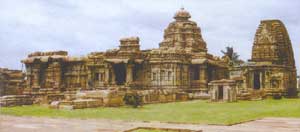 Pattadakal is not only popular for Chalukyan architecture but it is also a holy place for royal coronation, Pattadakisuvolal. Temples constructed here mark the blending of the RekhaNagara-Prasada and the Dravida Vimana styles of temple building.
Pattadakal is not only popular for Chalukyan architecture but it is also a holy place for royal coronation, Pattadakisuvolal. Temples constructed here mark the blending of the RekhaNagara-Prasada and the Dravida Vimana styles of temple building.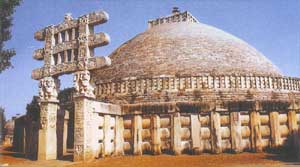 Imposing Stupa-1 with four gateways and railings made Sanchi a world famous Buddhist site. The original stupa of the Asokan times was enlarged and faced with stones.lt is decorated with balustrades, staircases and an umbrella on top. Besides this, other stupas, monolithic Asokan pillar, many other temples, monasteries and sculptures are found scattered at Sanchi and its adjoining hills from the Mauryan period to the twelfth century AD.
Imposing Stupa-1 with four gateways and railings made Sanchi a world famous Buddhist site. The original stupa of the Asokan times was enlarged and faced with stones.lt is decorated with balustrades, staircases and an umbrella on top. Besides this, other stupas, monolithic Asokan pillar, many other temples, monasteries and sculptures are found scattered at Sanchi and its adjoining hills from the Mauryan period to the twelfth century AD.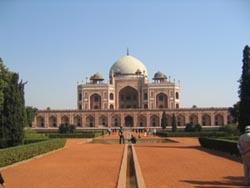 The first substantial example of a garden tomb on charbagh pattern with high arches and double dome was erected by Humayun's queen Hamida Banu Begam (Haji Begam) in AD 1569 at a cost of 15 lakh rupees (1.5 million).
The first substantial example of a garden tomb on charbagh pattern with high arches and double dome was erected by Humayun's queen Hamida Banu Begam (Haji Begam) in AD 1569 at a cost of 15 lakh rupees (1.5 million).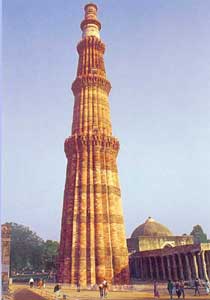 Qutb-Minar in red and buff sandstone is the highest tower in India. It has a diameter of 14.32m at the base and about 2.75m on the top with a height of 72.5m.
Qutb-Minar in red and buff sandstone is the highest tower in India. It has a diameter of 14.32m at the base and about 2.75m on the top with a height of 72.5m.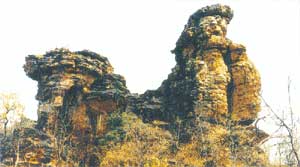 The Rock Shelters of Bhimbetka are in the foothills of the Vindhyan Mountains on the southern edge of the Central Indian plateau.
The Rock Shelters of Bhimbetka are in the foothills of the Vindhyan Mountains on the southern edge of the Central Indian plateau. 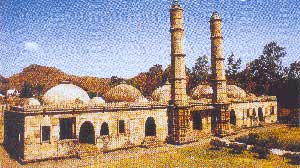 The impressive archaeological remains, located about fifty kms from Baroda (Gujarat) are at the foot of the Pavagadh hill. It was a prosperous medieval capital which ranked with other medieval capitals viz., Fatehpur Sikri and Vijayanagara.
The impressive archaeological remains, located about fifty kms from Baroda (Gujarat) are at the foot of the Pavagadh hill. It was a prosperous medieval capital which ranked with other medieval capitals viz., Fatehpur Sikri and Vijayanagara.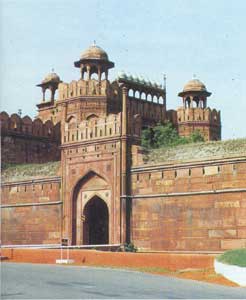 The Red Fort Complex was built as the palace fort of Shahjahanabad - the new capital of the 5th Mughal Emperor of India, Shahjahan (1628-58). It gets its name from its massive enclosing walls of red sandstone. It is adjacent to an older fort, the Salimgarh, built by Islam Shah Sur in 1546, with which it forms the Red Fort Complex.
The Red Fort Complex was built as the palace fort of Shahjahanabad - the new capital of the 5th Mughal Emperor of India, Shahjahan (1628-58). It gets its name from its massive enclosing walls of red sandstone. It is adjacent to an older fort, the Salimgarh, built by Islam Shah Sur in 1546, with which it forms the Red Fort Complex. 
 UTTARANCHAL MAP
UTTARANCHAL MAP SANIA MIRZA-TENNIS
SANIA MIRZA-TENNIS SAINA NEHWAL-BADMINTON
SAINA NEHWAL-BADMINTON ANJUM CHOPRA-CRICKET
ANJUM CHOPRA-CRICKET SONIKA KALIRAMAN-WRESLING
SONIKA KALIRAMAN-WRESLING TEJASWINI SAWANT-SHOOTING
TEJASWINI SAWANT-SHOOTING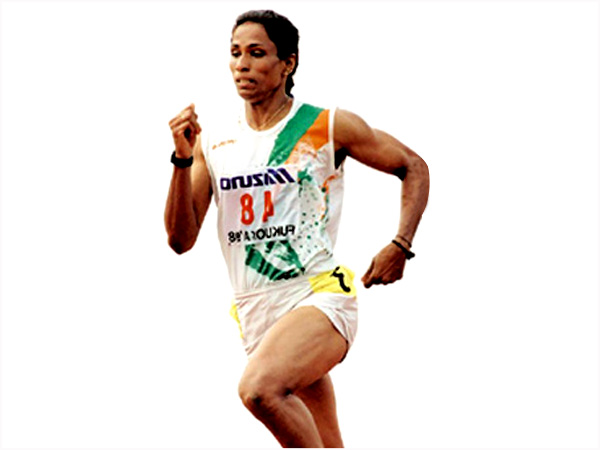 PT USHA (THE TEARAWAY PAYYOLI EXPRESS)
PT USHA (THE TEARAWAY PAYYOLI EXPRESS)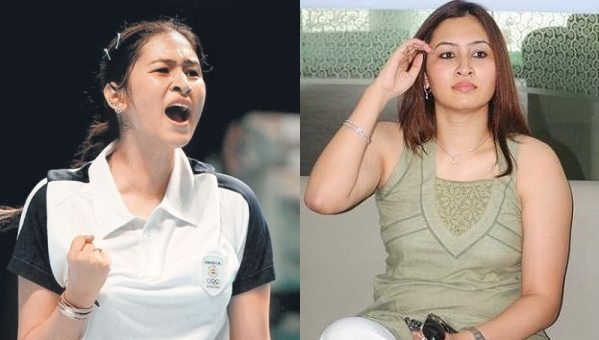 Jwala Gutta: Volcanic beauty of the court
Jwala Gutta: Volcanic beauty of the court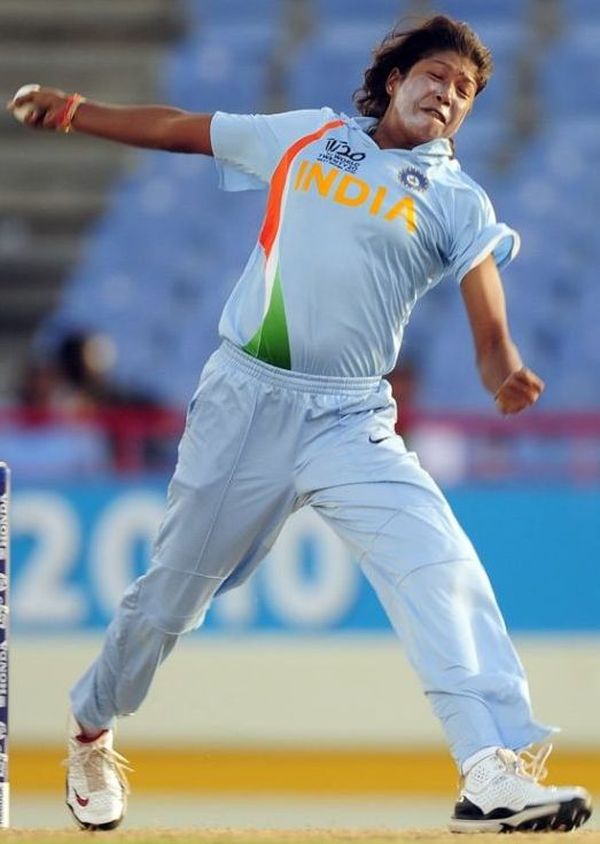 Jhulan Goswami: The Indian ‘Bowling Express’
Jhulan Goswami: The Indian ‘Bowling Express’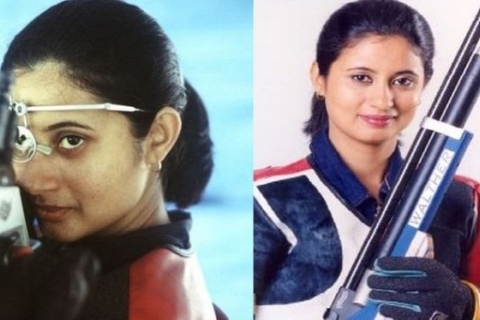 Anjali Bhagwat: Shooter with the Eagle’s Eye
Anjali Bhagwat: Shooter with the Eagle’s Eye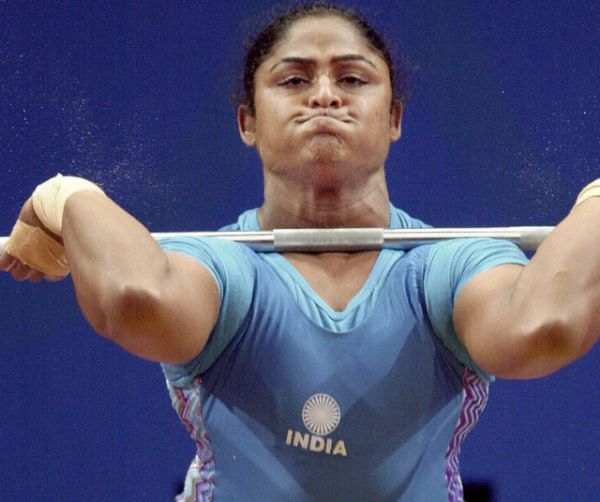 Karnam Malleswari: Power Lady of Indian Weightlifting
Karnam Malleswari: Power Lady of Indian Weightlifting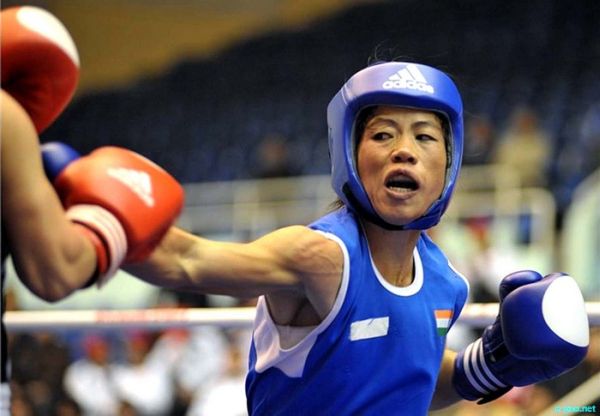 Mangte Chungneijang Mreykom: The Jaw Crusher
Mangte Chungneijang Mreykom: The Jaw Crusher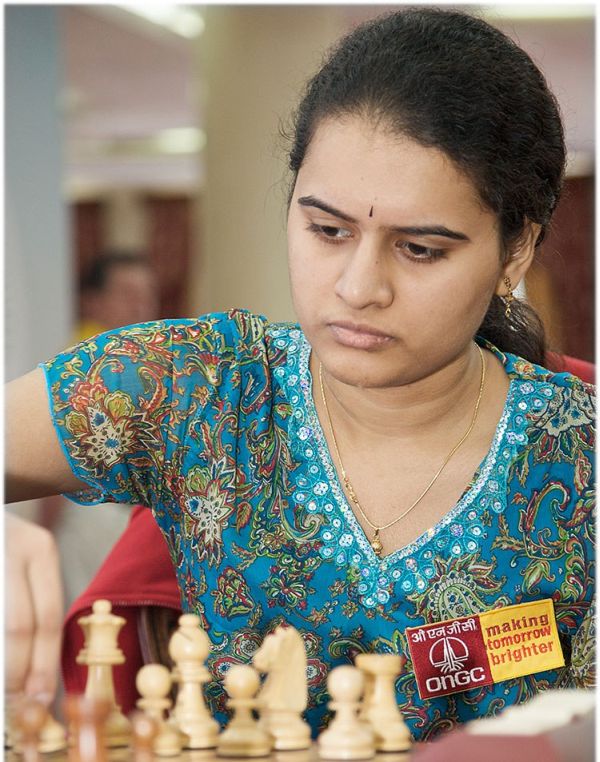 Koneru Hampi: The Grand Mistress
Koneru Hampi: The Grand Mistress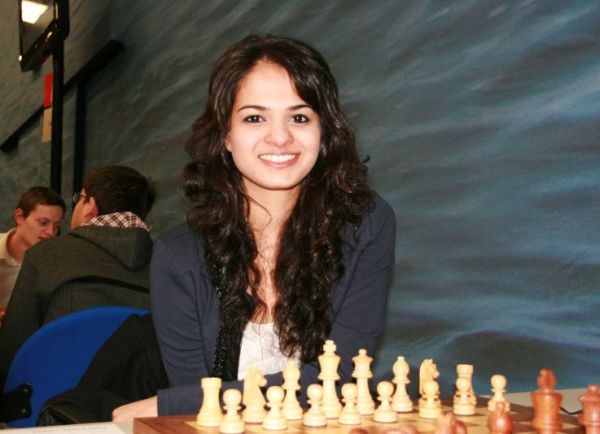 Tania Sachdev: Beauty with Brains
Tania Sachdev: Beauty with Brains